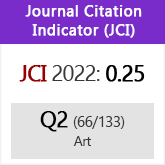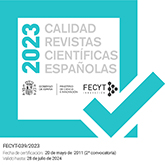Trazas para Iria Flavia
DOI:
https://doi.org/10.3989/aearte.2000.v73.i289.804Abstract
The current urban and monumental configuration of Ma Flavia-Roman foundation, dependent on its Administration of Padrón, episcopal seat until its transfer to Santiago de Compostela after the discovery of the Apostle's tomb- is the result of the constructive and artistic activity in XVII and XVIII centuries. From that time are the current Colegiata of Santa Maria and the Casa de los Canónigos («Canon's Place»), in front of the church, on the other side of the way which joins Pontevedra with Santiago. Many reputed architects and masters on such works were required, coming from the neighbouring Compostela, in order to construct this two emblematic buildings. The same happened with the furniture- altarpiece. Chorus chairs, etc.- carried out by important and well-known compostelan carvers, introducing, finally, the Baroque and Neoclasicism in Iria. Such an innovation implied plenty plans and designs, some of them signed by important artists of the Galician art. Some of them arrived to us and are studied on the following pages.
Downloads
Download data is not yet available.
Downloads
Published
2000-03-30
How to Cite
Taín Guzmán, M. (2000). Trazas para Iria Flavia. Archivo Español De Arte, 73(289), 23–44. https://doi.org/10.3989/aearte.2000.v73.i289.804
Issue
Section
Articles
License
Copyright (c) 2000 Consejo Superior de Investigaciones Científicas (CSIC)

This work is licensed under a Creative Commons Attribution 4.0 International License.
© CSIC. Manuscripts published in both the printed and online versions of this Journal are the property of Consejo Superior de Investigaciones Científicas, and quoting this source is a requirement for any partial or full reproduction.All contents of this electronic edition, except where otherwise noted, are distributed under a “Creative Commons Attribution 4.0 International” (CC BY 4.0) License. You may read here the basic information and the legal text of the license. The indication of the CC BY 4.0 License must be expressly stated in this way when necessary.
Self-archiving in repositories, personal webpages or similar, of any version other than the published by the Editor, is not allowed.















